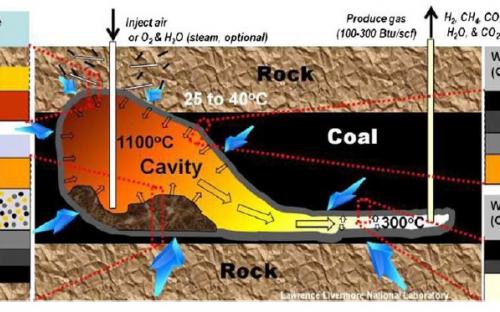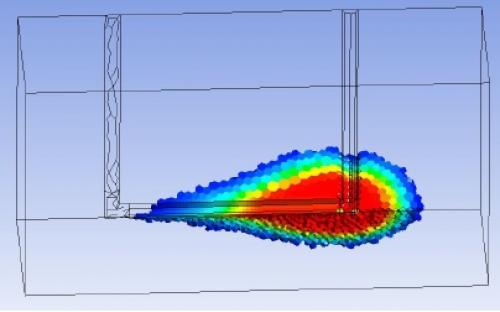Underground Coal Gasification (UCG) refers to the in-situ gasification of coal. It is accomplished by first establishing two vertical boreholes – the injection well and the production well. Next, the two wells are horizontally linked within the coal seam using specialized techniques such as directional drilling. Reactant gas mixtures (steam & oxygen) are sent through the injection well and suitable conditions for the ignition or start-up of the coal reactions is provided. A steady production of combustible gases due to the various reactions occurring between the gases and the coal is evident at the production well.
UCG presents several advantages over conventional coal mining and utilization techniques. The lack of need of mining and transportation results in much savings, especially for coals that contain a large fraction of ash. Furthermore, some of the environmental impacts, such as the production of NOx and SOx due to surface coal processes, are significantly reduced in case of UCG, through the maintenance of a reducing atmosphere underground. Finally, UCG enables the utilization of deep and thin coal seams, which are not accessible for mining, and could provide an efficient carbon capture and sequestration (CCS) possibility.
However, UCG possesses some distinct disadvantages as well. UCG is fairly capital intensive, and has been successfully practiced at only a few world-wide locations. The environmental impacts on aquifers situated close to UCG operation, and the potential of surface subsidence are some of the other problems associated with UCG.
A comprehensive computational fluid dynamics (CFD) based model of UCG process has been developed that incorporates many complex behaviors like oxidation, pyrolysis, reduction, subsidence, water influx, cavity growth and so on. The model is essentially a combination of the reactive heat and mass transport together with thermo-mechanical failure behavior.
A simple one-dimensional process model based on kinetics was developed initially and subsequently validated with lab-scale experimental data. A detailed flow patterns study (two-dimensional) using CFD was conducted and the results were used to develop an equivalent reactor network. The model was further extended in three-dimension that can: (a) describe the transition from the early stage to a fully developed gasifier, and (b) predict the areal sweep efficiency. In the model the essential features of the underground gasification process will be captured. Furthermore, the model is capable of addressing the influence of ash permeability on overall cavity development, as well as the thermo-mechanically induced spalling of both roof rock and coal.




















